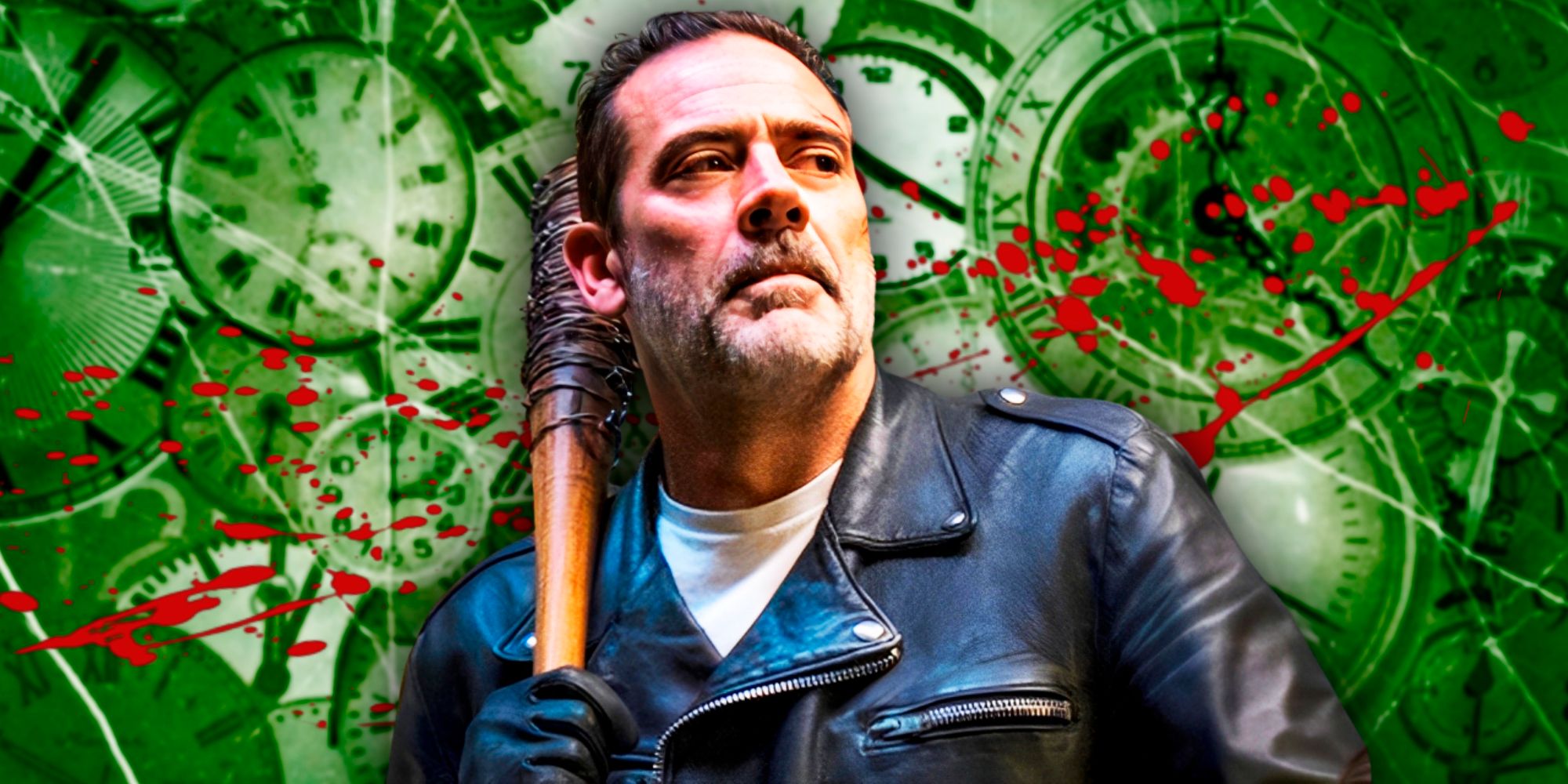The Walking Dead: Negan’s Transformation into a Fan-Favorite and His Timeline Explained
Negan, portrayed by Jeffrey Dean Morgan in The Walking Dead, is one of television’s most polarizing and beloved characters, evolving from a sadistic villain to a complex anti-hero who’s captured fans’ hearts. Introduced in 2016 as the bat-wielding leader of the Saviors, Negan’s charisma, dark humor, and layered redemption arc have made him a standout in the Walking Dead universe. His journey, spanning the main series and the spinoff The Walking Dead: Dead City, is a testament to the franchise’s ability to craft compelling characters. How did Negan go from despised tyrant to fan-favorite icon, and what does his timeline reveal about his enduring appeal? Let’s trace his path through the apocalypse, explore the moments that won fans over, and uncover why Negan remains a cultural phenomenon.

Negan’s Introduction: A Villain Like No Other
Negan first appears in The Walking Dead’s Season 6 finale, “Last Day on Earth” (April 3, 2016), stepping out of a trailer with his barbed-wire bat, Lucille, and a wicked grin. Based on Robert Kirkman’s comics, Negan is the leader of the Saviors, a group extorting communities like Alexandria for supplies. His debut, marked by a chilling monologue and the cliffhanger of an unseen killing, set the stage for his dominance. The Season 7 premiere, “The Day Will Come When You Won’t Be” (October 23, 2016), cemented his villainy, as he brutally murders Abraham Ford (Michael Cudlitz) and Glenn Rhee (Steven Yeun) in front of Rick Grimes’ group. Set around April 2012, roughly 600 days post-outbreak, this moment—day 630 in the timeline—establishes Negan as a ruthless antagonist.
Morgan’s performance, blending menace with charisma, made Negan instantly iconic. His theatrical taunts, like “Eeny, meeny, miny, moe,” and dark humor—“Lucille is thirsty!”—gave him a larger-than-life presence, distinct from prior villains like the Governor. However, the deaths sparked backlash, with viewership dropping from 17 million to 11 million in weeks, as fans recoiled at the graphic violence and loss of Glenn, a beloved character. Despite the controversy, Morgan’s magnetic portrayal hinted at Negan’s complexity, planting seeds for his fan-favorite status.
The Savior War: Negan’s Reign and Fall (2012–2013)
Seasons 7–8, set from mid-2012 to early 2013 (days 630–800), showcase Negan’s control over Alexandria, Hilltop, and the Kingdom. He forces Rick’s group into submission, demanding tributes while ruling the Sanctuary with an iron fist. Key moments, like burning Dwight’s face and killing Spencer, highlight his cruelty, but glimpses of humanity—his loyalty to Lucille, named after his late wife—add depth. Morgan leaned into Negan’s contradictions: a tyrant who believes he’s saving humanity by enforcing order. Fans began to appreciate this nuance, with some drawn to his twisted moral code.
The war against the Saviors, culminating in Season 8’s “All Out War” arc, sees Rick’s coalition fight back. Negan’s charisma shines in standoffs, like his taunts from the Sanctuary’s balcony, but his arrogance leads to his downfall. In the Season 8 finale (April 2018), set around day 800, Rick defeats Negan in combat but spares his life, imprisoning him in Alexandria to honor Carl’s vision of peace. This moment, roughly 2.5 years post-outbreak, marks Negan’s transition from villain to captive, setting up his redemption. Fans on social media began rooting for Morgan’s performance, with posts praising his ability to make Negan “hateable but fascinating.”
Imprisonment and Redemption: Negan’s Transformation (2013–2019)
Negan’s imprisonment, spanning Seasons 9–10 (2013–2019, days 800–3,650), is a pivotal phase. Locked in Alexandria’s cell, he’s stripped of power, forced to reflect on his actions. Season 9, set after a six-year jump to 2019, shows a humbled Negan, interacting with Judith Grimes, Rick’s daughter, who brings out his softer side. Their banter—Negan teaching Judith math, her challenging his cynicism—reveals his potential for change, winning over fans who saw his charm beyond villainy. Morgan’s scenes with young Cailey Fleming (Judith) were a highlight, with fans calling them “unexpectedly heartwarming.”
In Season 10, set in 2019–2020, Negan’s redemption accelerates. Released to help fight the Whisperers, he infiltrates their ranks, killing their leader, Alpha, in a shocking twist (day 3,600). This act, driven by a desire to protect Judith and Alexandria, earns him grudging respect from characters like Daryl and Maggie, who returns after Glenn’s death. Fans embraced this shift, with online discussions highlighting Negan’s growth from self-serving to selfless. His humor—quipping “I’m Negan, bitch!” while undercover—kept his edge, making him a fan-favorite for blending wit with heroism.
The Commonwealth and Beyond: Negan’s New Path (2020–2023)
Seasons 11, set in 2020–2022 (days 3,800–4,500), see Negan navigating the Commonwealth, a sprawling community with its own conflicts. He forms an uneasy alliance with Maggie, helping her protect Hilltop’s survivors. A key moment comes in Season 11, where Negan reveals his remorse for Glenn’s death, admitting to Maggie he’d “do things differently.” This vulnerability, set around 2021, resonates with fans, who saw Morgan’s performance as a masterclass in redemption. By the series’ finale in 2022, Negan leaves Alexandria to forge his own path, free but haunted by his past, roughly 12 years post-outbreak.
Negan’s Timeline On The Walking Dead Explained
He Has A (Somewhat) Sympathetic Backstory


Dead City: Negan’s Ongoing Saga (2024–2025)
Negan’s story continues in The Walking Dead: Dead City, set in 2024–2025 (days 4,800–5,000), 2–3 years after the main series’ end. The spinoff pairs Negan with Maggie in a zombie-infested Manhattan, where they search for her kidnapped son, Hershel. Negan’s arc explores his struggle for redemption while confronting his past sins—Glenn’s death remains a sore point. Morgan’s chemistry with Lauren Cohan (Maggie) and his portrayal of a Negan torn between survival and atonement have earned praise, with Dead City renewed for a second season. Set concurrently with Daryl Dixon and post-The Ones Who Live, Dead City extends Negan’s timeline, showing his ongoing evolution.
How Negan Became a Fan-Favorite
Negan’s fan-favorite status stems from several factors. First, Morgan’s performance is electric, balancing Negan’s cruelty with charisma. His ability to make Negan likable—despite killing Glenn—won fans over, with social media posts lauding his “scene-stealing” presence. Second, Negan’s redemption arc, from tyrant to ally, mirrors classic anti-hero journeys, appealing to viewers who love complex characters. His interactions with Judith, his sacrifice against the Whisperers, and his remorse in Dead City showcase growth, making him relatable.
Third, Negan’s humor and quotable lines—“Lucille gives me strength!”—add levity to the grim apocalypse, endearing him to fans who enjoy his swagger. Finally, the Walking Dead’s storytelling, giving Negan a full arc over a decade, allows fans to invest in his transformation. Online fan communities have celebrated Morgan’s commitment, with some calling Negan “the best villain-turned-hero since Darth Vader.” His timeline, spanning 2012–2025, reflects the franchise’s depth, with each phase adding layers to his appeal.
The Walking Dead’s Broader Impact
Negan’s journey highlights The Walking Dead’s strength: crafting characters who evolve with the apocalypse. The franchise, spanning seven shows, covers over 15 years, from Fear the Walking Dead’s outbreak (2010) to Dead City’s late timeline (2025). Negan’s arc ties into this, intersecting with The Walking Dead’s Savior war, The Ones Who Live’s CRM backdrop, and Dead City’s post-series world. Streaming on Netflix and AMC+ keeps the universe accessible, with Dead City and Daryl Dixon drawing strong viewership, proving its staying power despite earlier declines to 3 million viewers by 2022.
The franchise’s inclusivity—queer characters, diverse casts—and themes of redemption resonate, with Negan embodying the latter. His popularity has fueled spinoff success, with Dead City’s renewal and Daryl Dixon’s Season 3 showing the universe’s vitality. Upcoming projects like More Tales from The Walking Dead Universe could revisit Negan, further cementing his legacy.
Why Negan’s Timeline Captivates
Negan’s timeline fascinates because it traces a villain’s redemption across a sprawling apocalypse, reflecting universal themes of guilt, forgiveness, and second chances. Jeffrey Dean Morgan’s soulful performance, as he’s described it, brings Negan to life, making fans root for a once-hated killer. His journey—from Lucille’s bloody debut to Dead City’s moral struggles—mirrors the Walking Dead’s evolution, keeping fans engaged through narrative risks and character depth. Whether you love his swagger or admire his growth, Negan’s story is a cornerstone of the franchise’s enduring appeal.
As Dead City Season 2 looms, fans can stream Negan’s arc on Netflix or AMC+, reliving the moments that made him a legend. From villain to fan-favorite, Negan’s timeline is a wild ride through the apocalypse—one that shows why The Walking Dead still owns fans’ hearts, just as it does Morgan’s.





